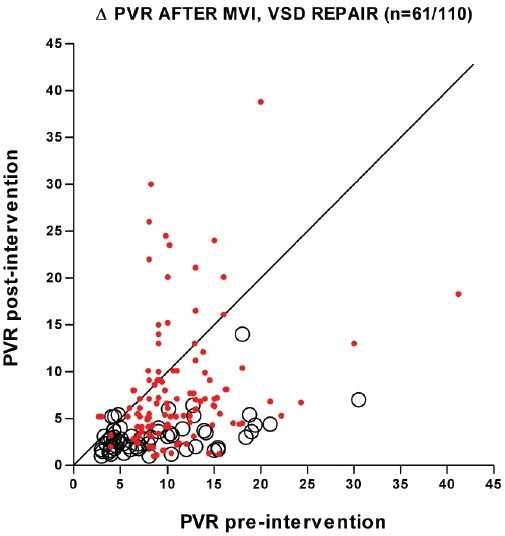Figure 3.

Change in PVR after mitral valve intervention (MVI) to effect relief of mitral stenosis/regurgitation (circles, n = 61 patients) or closure of VSD (dots, n = 110 patients). Nearly all mitral valve patients patients had a large fall in PVR after relief of left atrial hypertension, while many patients with VSD had unchanged or increased PVR after repair. For mitral valve replacement/valvuloplasty: data are from six studies where PVR (usually not indexed) and left atrial pressure were included for individual patients before and after mitral valve repair, replacement, or balloon valvuloplasty. Patients had mitral stenosis, regurgitation, or both. In all studies, the patients were mostly adults in the third to seventh decade, but at least nine were in their teens. Post-procedure hemodynamics were obtained at least once, and usually several months after intervention. Only patients with pre-intervention PVR > 3 Wood units, and post-intervention LAP < 15 mmHg are included.[61–66] For VSD repair, data are from seven reports and limited to patients with surgical VSD closure, who had pre- and post-operative cardiac catheterization, and the age of repair could be linked to hemodynamics. In some cases, data were estimated from figures. All patients were 2-18 years old, save for 3 older patients; 75 patients were 2-10 years old at operation. Some patients also had ASD and/or patent ductus arteriosus closure. Time from surgery to the post-operative cath was 4 months to 13 years, usually > 1 year. Unindexed PVR was converted to indexed PVR by assuming the body surface area for a male of average weight and height at the age of operation. Data do not reflect intra- and postoperative deaths, and underestimates the incidence of progressive PH since in some patients PAP increases with time after VSD closure.[103–105,107,108,161,162]
